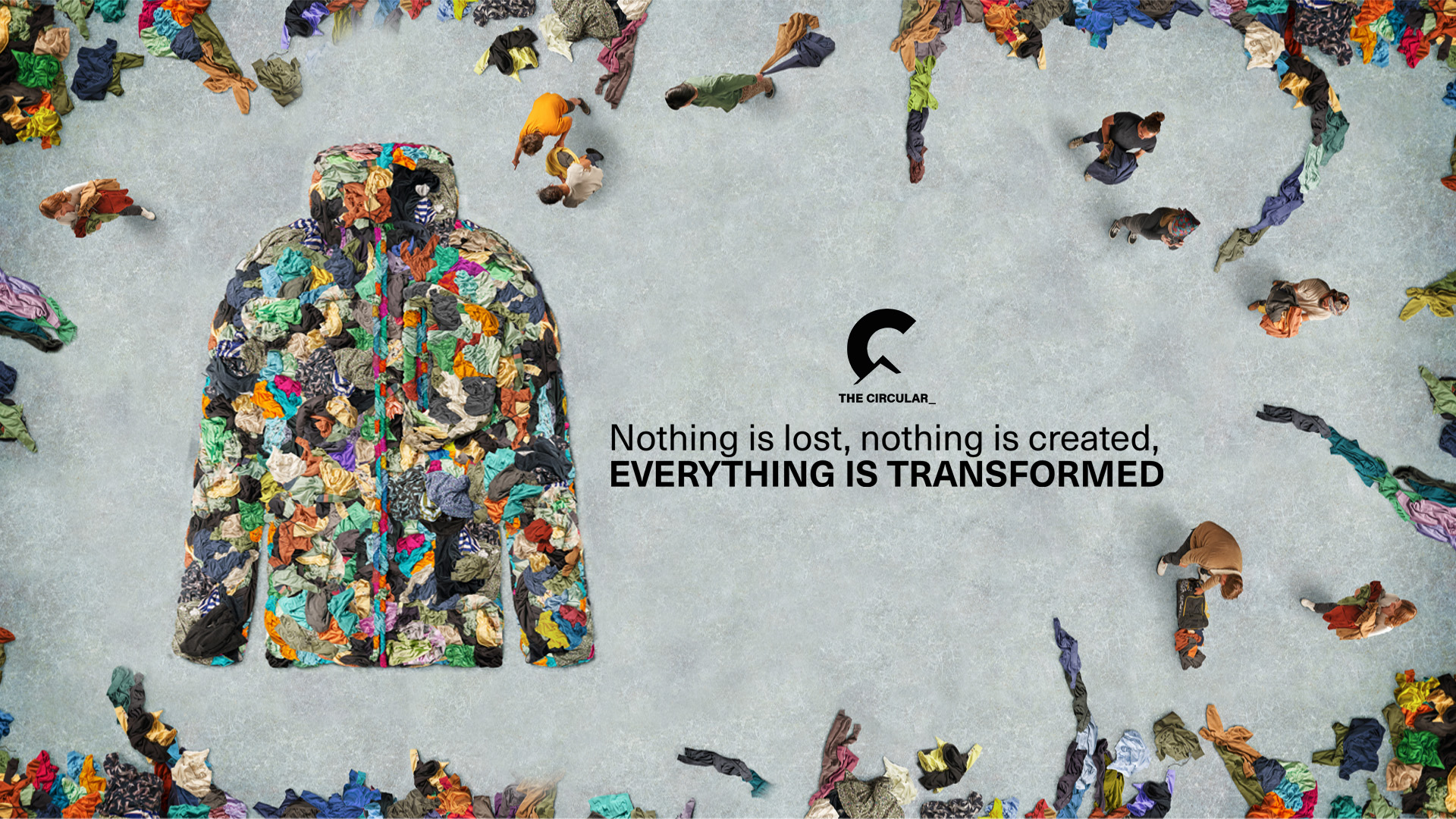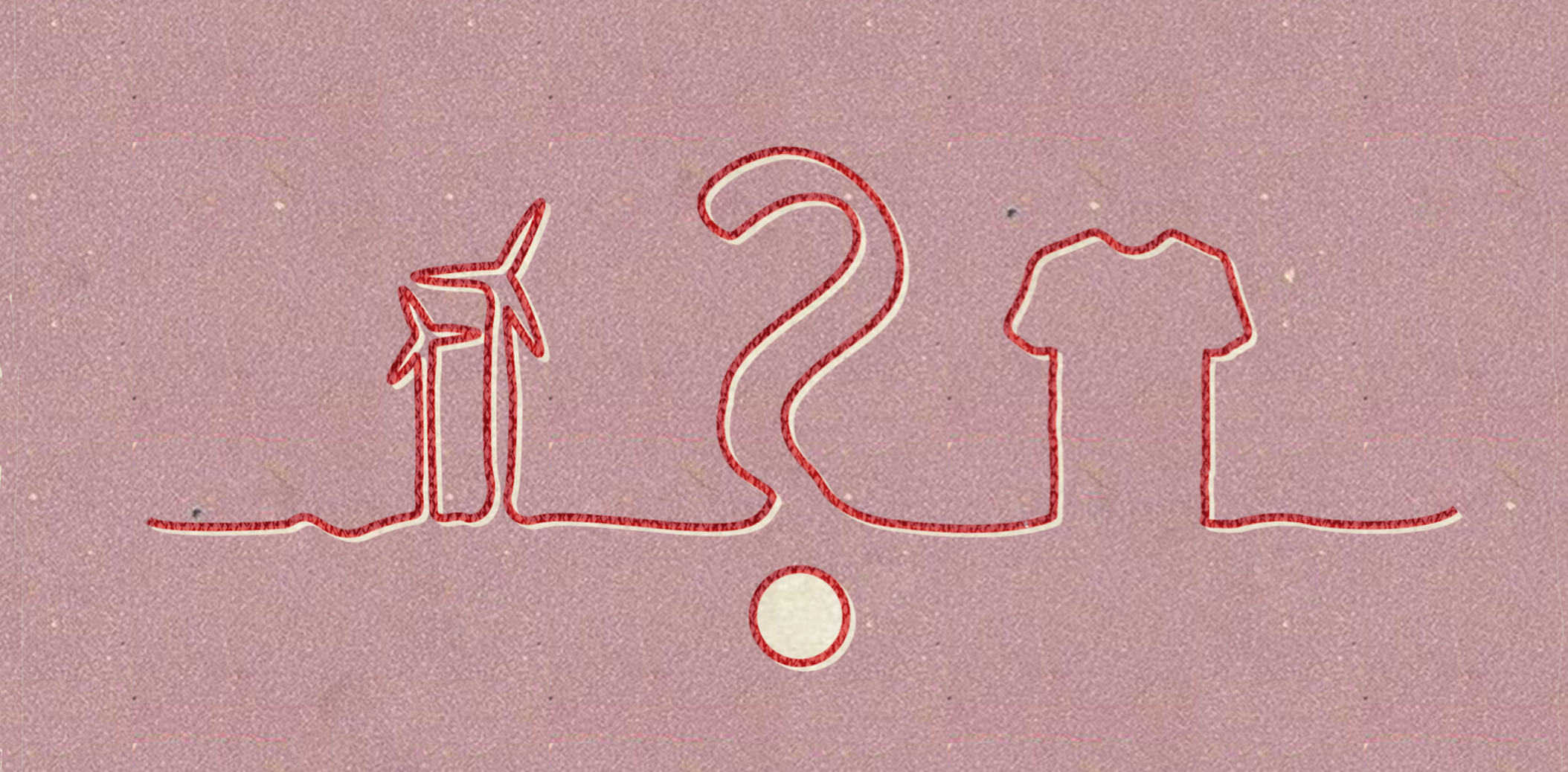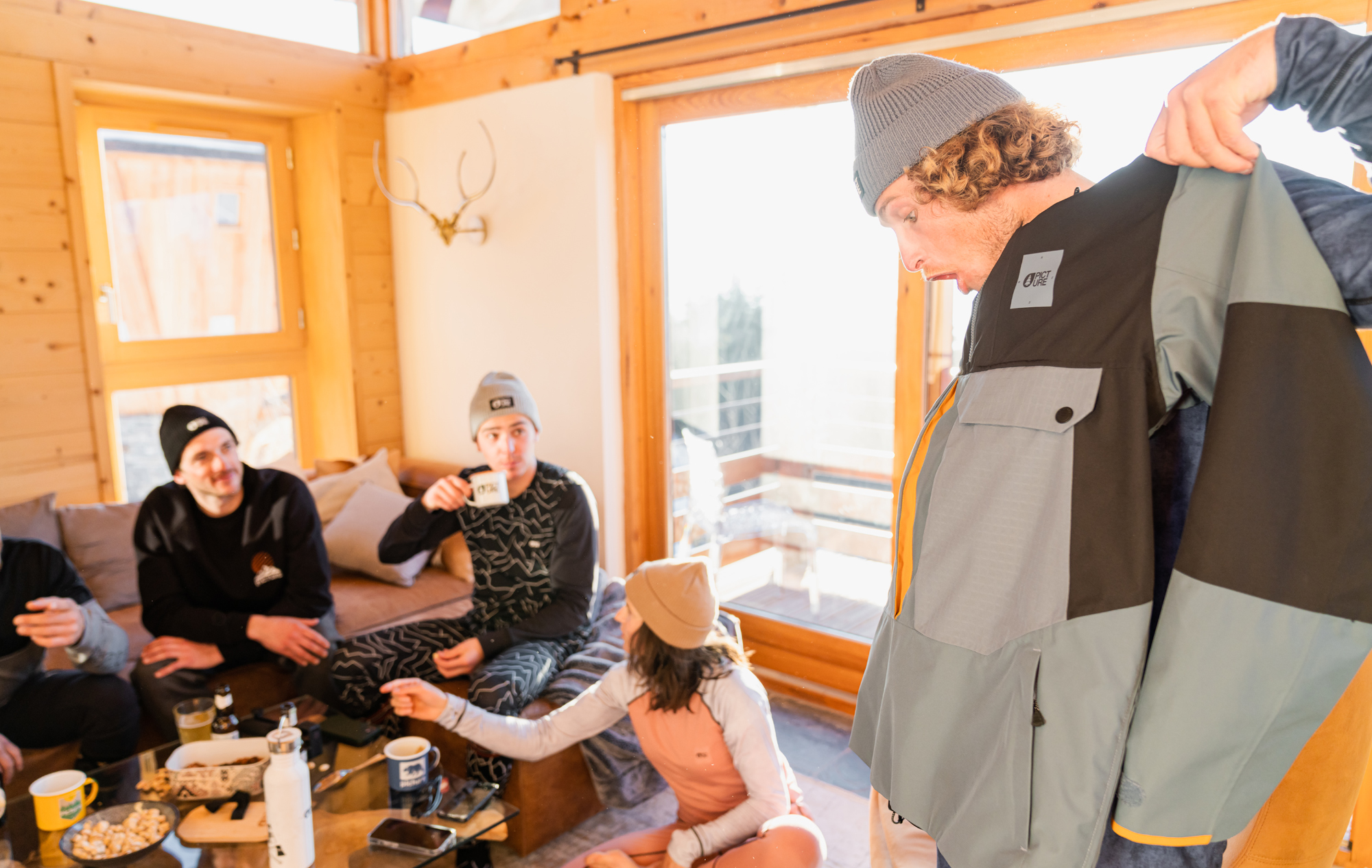Products Technology, Sustainability
Circular, our new program for recycled clothes
Article published on February 23, 2023

Our main motivation as a committed textile brand is to make this industry less polluting and more sustainable. There are multiple points of improvement, but 3 themes clearly stand out:
- Produce less, consume less
- Transitioning out of coal and gas electricity for the spinning, weaving, and dyeing stages
- Getting away from oil-based materials
We have already written this article which proposes a great summary of the first 2 points.
Regarding oil and materials, we will talk about it here!
Let’s start by reminding ourselves that to keep the temperature below +1.5°C, we would have to leave almost 60% of the oil reserves in the ground. And remember that, oil is of finite quantity. At constant production and according to known reserves, there would still be about 50 years of oil left. The more oil we extract, the further away we are from our climate objectives. The more we depend on it, the more consequences will be suffered. Great (that was a sarcastic great)!
Polyester is, by far, the most manufactured material in the textile industry, with 55% of the total production volume, followed by cotton (25%) and then other synthetic or cellulose fibers (polyamide, acrylic, wool, etc.). The global production of polyester has doubled between 2000 and 2020, which also raises many questions.
In its conventional version, polyester is directly derived from oil. Fortunately, there are other ways to do this, some of which we are familiar with:
- Recycling PET plastic bottles, a classic for us since 2009 with our Taiwanese partners. Worldwide, only 15% of the polyester used is recycled polyester.
- Use bio-polyester partially derived from sugar, after refining and fermentation. We have been using it for the last few years for our technical products, but we are moving away from it and replacing it with an alternative that seems more satisfactory to us: “circular” polyester, partially derived from used clothing.
Why this change?
Bio-polyester is an interesting solution, we talked about it in this article. But we identified too many limits to continue the adventure:
- The sugar we were using was a “waste product”, a by-product of the sugar cane production. It is obvious that this supply would have been insufficient if tomorrow all the brands decided to start using it. Would this lead to risk of conflict of land use? Risk of deforestation?
- The direct dependence on oil remained quite strong with only 30% of the chemical formula of bio-polyester comes from sugar. If it is understandable to you: there was only mono ethylene glycol that we managed to bio-source.
- Our calculations of carbon intensity for 1kg of polyester pellets, made with Quantis, showed little difference between conventional polyester and bio-sourced polyester.
- The price of this fiber was high and cut into our margins.
For all these reasons, we have stopped using bio-based polyester.
New option: “circular” polyester.
This involves collecting and recycling used clothing (all brands) made of 100% polyester. The fabric scraps that occur during the manufacturing process are also mobilized to create a significant stock. Thus, the average composition of a circular fiber is: 60% fabric scraps / 40% used clothing.
These two sources are located in China, the company Jiaren takes care of everything. Then, the Picture supply chain takes over (spinning, weaving, dyeing, assembly) with our usual partners.
You got questions? We got you. Here is a small FAQ to answer all.
1/ Why not recycle Picture clothes?
Recycling a garment should be seen as the last of the final steps. Before that, it has to be worn, worn again, repaired, then worn again. Then it can be given away, sold second hand, reused, etc. The garment is not a single-use plastic bottle. So, the priority is not to collect clothes to guarantee a new production stock, but rather to make the ones we already have last. Also, our clothes are sold all over Europe and North America, leading to a very scattered distribution that would be different to collect. Overall, the volumes that would be recover through only Picture clothes would be low compared to the production needs.
So far, it is a collection of used clothes in China.
2/ Why not collaborate with other brands to organize a group collection?
This is an option indeed. We aren’t against it. But as we said, our priority is the durability of the clothes. That’s why we put more effort into other issues, like our lifetime reparability guarantee or the En Mode Climat collective.
So, we are happy to see that recycling solutions are emerging and that they will allow the circular economy to develop. On the other hand, facilitating recycling should not only serve to maintain a production machine that doesn’t question why it keeps going and growing.
3/ Why does recycling take place in China and not in Europe?
The collection of used clothing is in China because Jiaren’s recycling technology is also operational there. As our supply chain (spinning, weaving, dyeing, etc.) for technical products is historically located in Taiwan and China, the connection was easy. In Europe, more or less similar technologies are emerging but we have never really explored these possibilities, except with the Carbios company which is very promising… and close to us in Clermont-Ferrand!
4/ How does this recycling process work?
Well, we are not chemists but if you are, here are some details! The polyester is depolymerized to return to the molecular level, without any impurity. This allows then a separation with mono-ethylene glycol on one side and on the other side the terephthalic acid. These are the 2 original components of polyester. Other steps are necessary (pre-treatment, filtration, storage, etc.) to get to this point. Then, there is re-polymerization to obtain polyester granules.
5/ Are the CO2 emissions of this process lower than those of other alternatives (conventional, bio-sourced, recycled)?
Three years ago, we asked Quantis to calculate the CO2 emissions for 1 kilo of different types of polyester granules, before spinning, in China. The country of study is important because the electricity mix of the countries has a great influence on the result.
Then we crossed this info with Jiaren’s results for 1kg of circular polyester pellets.
Results:
- Conventional polyester: 3.13 kg CO2
- Bio-polyester: 2.77 kg CO2
- Recycled polyester from plastic bottles: 1.20 kg CO2
- Circular polyester: between 1.08 and 1.45 kg CO2
For all our polyester products, we are now positioned on what seems to be the 2 best options available. Thus, today, 80% of our technical parts incorporate circular polyester.
Let’s not forget that the battle of carbon accounting should not mask other angles: sobriety, durability, origin of materials, etc. For example, 1 conventional polyester jacket is better than 3 recycled polyester jackets, and it is better to recycle clothes that have lasted longer than a plastic bottle used only once.
6/ Is the quality the same as conventional polyester?
Yes, nothing changes. Polyester granules, whether conventional, recycled, or circular, are chemically identical. At this stage, the yarn is not even manufactured yet! From a quality and durability point of view, everything will depend on the following steps: spinning, weaving, dyeing, assembling, choice of water repellent treatment, membrane, etc. As for Picture, our quality standards are the same as before. The same goes for the repairability aspect.
7/ What are the certifications?





